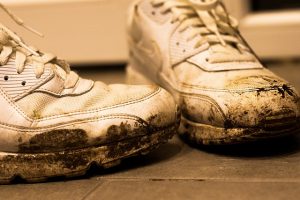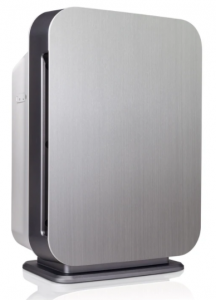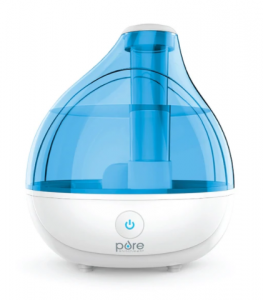Most people spend about 90% of their time indoors. As such, we must ensure that the indoor air is in tip-top shape to avoid diseases and live a long, healthy, happy life. Today, we’ll give you a few tips on how to improve indoor air quality.
Whether you live in a visibly polluted neighbourhood or a serene area with no noticeable dust and other airborne particles, disease-causing pathogens are still there. So, you must make a conscious effort to continuously clean the air inside your house.
This will help you operate at an optimum level – at home or in the office. By the way, indoor air does not necessarily mean the air at home. If you work at an office or a store, you also need to ensure that you’re breathing clean air to avoid respiratory complications.
What to Do to Improve Indoor Air Quality
Here are a few things you can do to ensure that the air circulating in your home is always clean and fresh:
Open your doors and windows now and then

If you do not open your doors and windows, allergens and other disease-carrying particles will build up inside the house. Regardless of whether you are sick or you live in a highly polluted area, opening doors and windows regularly will help improve indoor air quality by letting in the fresh air.
If the pollution outside is too much during the day, you can partially open the windows at night. To quote Dr. Paul Young (Lancaster University): “If you live near a super-busy road, you may not want to have the window open all the time, but you are going to need to ventilate.”
Avoid smoking inside the house
Smoking is one of the leading causes of indoor air pollution. If possible, stop smoking inside the house completely. You can do it in the yard, the front porch, or on the balcony. Also, you can have a designated smoking zone if you live in an apartment building.
As you may be aware, smoke particles and the odour can be really difficult to remove because it sticks onto fibres. The smell can last for days if not weeks on your clothes, bedding, and seats. Besides, smoking (especially second-hand smoking) causes a myriad of respiratory diseases including lung cancer.
Beware of Radon
Radon is a colourless, tasteless, odourless but radioactive gas that finds its way into homes via foundation cracks and gaps. It is the second leading cause of lung cancer after smoking. So, it is obvious that you don’t want radon circulating in your house.
You can use a simple radon test kit to find out if there is any radon in your home. If the radon is at hazardous levels, call a radon mitigation specialist immediately.
Take off your shoes before entering the house

Taking off your shoes as you enter the house is another way to improve indoor air quality. Apart from tracking in mud and dust, you’ll avoid bringing in many more pathogens. These include E. coli (Escherichia coli), Staphylococcus bacteria, C. diff (Clostridium difficile), and pesticides.
Such particles, when agitated, find their way into the air and keep floating around your home. It is therefore to get sick from inhaling or even ingesting these dangerous microorganisms that found their way into the house by sticking onto shoes.
Keep plants inside the house
Even though the difference is not major, plants indeed help to improve indoor air quality. The only thing you need to be aware of is which plants can survive indoors and which ones are okay to have around babies and pets.
Some plants that can survive indoors and improve indoor air quality include aloe, rubber tree, snake plant, dracaenas, golden pothos, and peace lily.
Dust your home frequently
Heavy particles tend to settle on furniture, bedding, cushions, window sills, and electronics among other surfaces. Later on, they will still be blown back into the air when you open your windows or when you turn on the fan.
Therefore, you should dust the house at least thrice a week (or daily if possible) to ensure that the dust and other allergens do not accumulate to unmanageable amounts. To avoid kicking particles back into the air, use a microfibre cloth, a slightly dampened cloth, or a dusting cloth.
Acquire a good vacuum cleaner
Vacuuming is also a great way to improve indoor air quality. However, not any vacuum cleaner will offer the best performance in regards to this. My advice is that you look for a vacuum with a good, tightly sealed filtration system. Also, it should have a HEPA filter.
HEPA filters trap up to 99.97% of particles, so the air leaving the vacuum will be clean. The last thing you want is a vacuum that picks up dust and other allergens only to throw them back into the air. A good example of such a vacuum is Shark AZ2002.

Wash your bedding regularly
Another way to keep the indoor air in your home clean is to wash your bedding from time to time. A lot of dust tends to settle here and may get into the air circulation as you spread the bed or even at night when you sleep.
To be safe, wash your bedding weekly in hot water.
Air purification
Another way to improve indoor air quality is by use of an air purifier. There are many options out there – hundreds in fact. However, you can only rely on the best air purifiers to reap maximum benefit and to get value for your money.
A good air purifier should have a HEPA filter or a True HEPA filter to capture up to 99.97% of airborne particles. Pollutants such as dust, pollen, pet hair and dander, and lint will be swiftly removed from the air.
If you want to get rid of smoke, fumes, odours, and VOCs look for an air purifier that has activated carbon in its arsenal. You can select a reliable air purifier from our review of the best air purifiers in Canada.

Run exhaust fans in the bathroom and kitchen
With time Volatile Organic Compounds (VOCs) accumulate in the kitchen and bathroom as you cook, clean, or even wear make-up. Run the exhaust fans to prevent any build-up that can result in health issues.
Also, you will avoid the growth of mould and mildew because exhaust fans also reduce moisture content in the bathroom and kitchen.
Humidity control
What is the ideal humidity level indoors? According to Mayo Clinic, the perfect range of humidity is 30 to 50 percent. When the humidity is too low, you may experience nasal irritation, dry skin, irritation in the throat, and itchy eyes.
The solution is to acquire a good humidifier such as this Pure Enrichment humidifier.

Please note that a poorly maintained humidifier can cause more harm than good. So, ensure that the humidifier is always clean to avoid flu-like symptoms and allergic reactions. Dirty humidifiers tend to harbour bacteria and mould.
Also, do not let the humidity become too high because it can also result in problems. Your home will become stuffy if the humidity is too high. To sort this out you need to turn on your dehumidifier or air conditioner.
Check and change your furnace filter on time
Furnace filters prevent dust and other pollutants from getting into the furnace parts and finding their way into your indoor air. The solution is to check if it’s dirty and change it. Depending on the type, we recommend that you change the furnace filter every 30 to 90 days.
Conclusion
We spend most of our time indoors (up to 90 percent). So, we must endeavour to make sure that our homes or places of work are habitable. Apart from cleaning various surfaces, indoor air needs utmost attention.
There are many ways to improve indoor air quality. Ample ventilation, humidity control, vacuuming, dusting, and smoking outdoors are some of the many things you need to do.
Once you follow our guidelines on improving indoor air quality, you will breathe more easily and avoid respiratory complications. Below are some more tips on how to improve indoor air quality (YouTube video by Ace Hardware):

